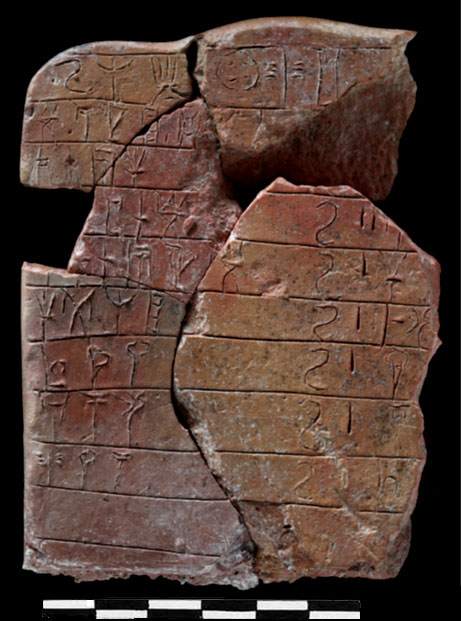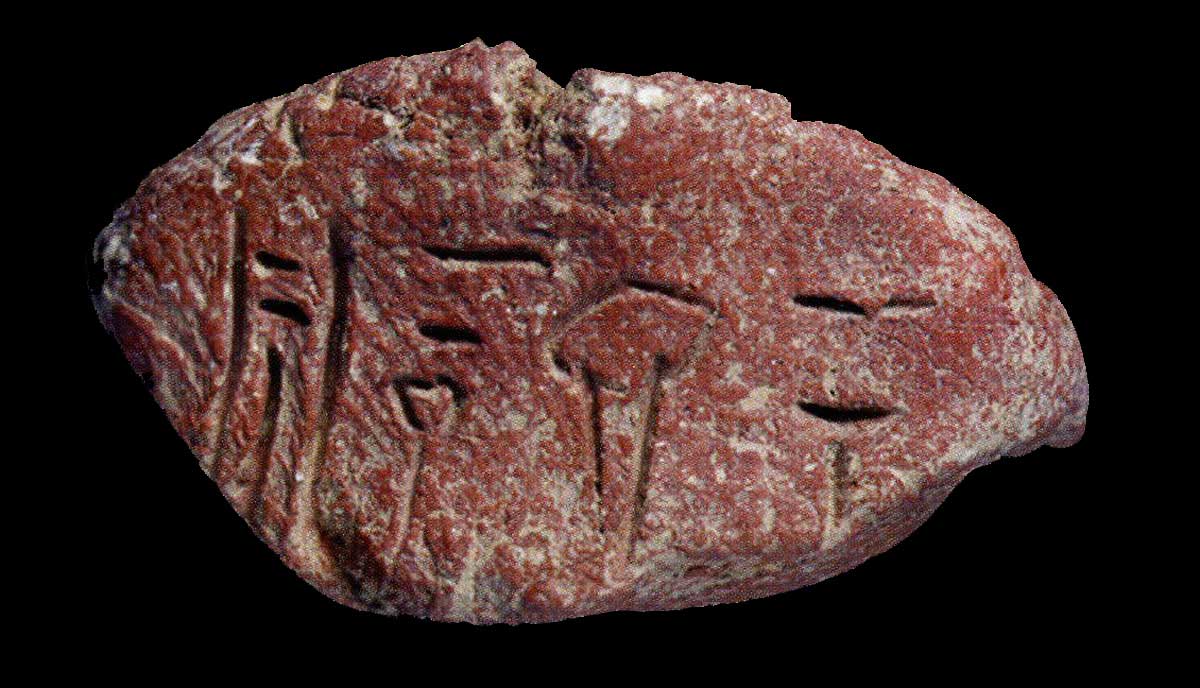The upper storey of the West Stoa seems to have been used for various activities. Several pithoi, as well as vessels, mostly dippers, were kept on it. But what is most important of all is that on the upper storey a small archive of Linear B tablets was also kept. This is the first Linear B archive found in Laconia. These speaking finds can give us valuable information that archaeological material can hardly provide. Although tablets are accounting records, they can still save information about language, religion, administration and many other aspects of human life.

Fig. 1. Palm-leaf Linear B tablet
In total, about 210 fragments belonging to about 100 tablets have been found. Almost all the fragments were found in direct contact with the mortar floor of the upper storey. For this reason it is certain that the tablets were kept on the upper storey. The tablets are divided into two types: the palm-leaf (Fig. 1) and the page-shaped (Fig. 2). The study conducted shows that most tablets refer to perfumes. According to the study so far, no reference is made to olive oil, which of course makes an impression when the tablets were kept along with pithoi that probably contained oil.

Fig. 2. Page-shaped Linear B tablet
Many other interesting finds were also found among the fragments of the tablets. A cylindrical piece of baked clay bearing fingerprints is undoubtedly a leaf-shaped tablet that has obviously been discarded and folded to be reused. This, together with a piece of pure clay that may have been intended for making tablets or nodules, show that on the upper storey there was not only an archive kept, but also that there were scribes who made tablets on the spot.

Fig. 3. Nodule with the inscription wa-na-ko-to, i.e. belonging to the King
Eighteen suspended nodules with perforated holes were also found. Valuable documents or objects were tied with a string, on the knot of which a piece of clay was placed. This was then stamped with the personal stamps of the scribes. A process reminiscent of the so-called seal wax. Some of the suspended nodules also have an inscription, such as the HV Wq 117 nodule, which bears the inscription wa-na-ko-to, i.e.belonging to the King (Fig. 3).